Overview & Problem
We set out to increase student involvement in civic engagement on campus by improving transparency and spreading information about activism, volunteering, and org elections—then making it easy to participate. Spam! centralizes upcoming events and voting, and motivates action with badges for on-app and in-person engagement.
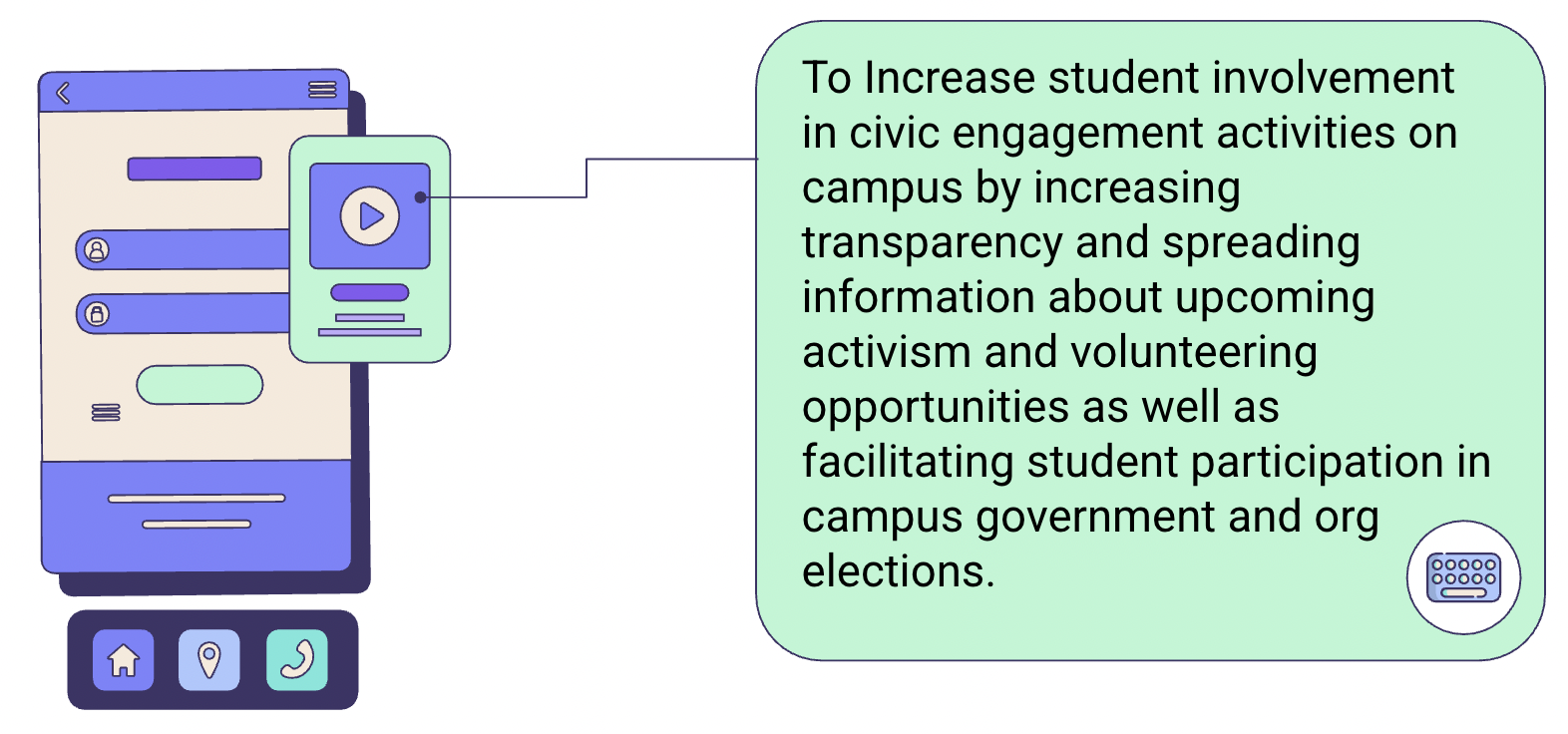
Design Guidelines
- Prioritize usability & accessibility; keep the experience energetic and fresh.
- Streamline access to key features; maintain feasibility within scope and timeline.
- Team posting controls to prevent spam/duplication (e.g., limit one post per group per day).
- Robust RSVP and powerful event filtering (time, theme, incentives).
- Very low barrier to entry—no instructions required to get value.
Research (Needfinding & Interviews)
Interviews surfaced time pressure, forgetfulness, and “spammy” comms as barriers; students still want simple ways to discover, filter, and follow up with orgs. They were receptive to an app that organizes events and streamlines communication, with opportunities around personalization and cross-campus sharing.
Key Takeaways
- Students forget events and attend only a few; desire quick filtering and reminders.
- Traditional posters are time-consuming; digital channels must avoid feeling spammy.
- Make it social and collaborative; consider future inter-campus use.
Personas
Wendy — Club President
Busy schedule; relies on GCal; wants better turnout; dislikes poster logistics; hopes for stronger commitment mechanisms.
Emily — First-Year Explorer
New to campus; seeking belonging; balancing academics and fun; wants low-friction discovery.
Sofia — Aspiring Leader
Active in orgs; aims for leadership roles and continuity in org knowledge transfer.
Task Analysis
- Find & attend events: Filter for civic activities, RSVP, add to calendar.
- Follow up with orgs: Explore FAQs, ask questions, contact members.
- Elections: Discover active elections, upload SOIs, and vote (clear timing & accountability).
Domain Analysis
Stakeholders include students, faculty, and alumni. Key tools include org/RSVP sites, WeEngage, 25Live, Google Calendar, Apple Reminders, and Google Forms. Physical resources: campus event spaces and e-board roles.
Branding
Visual system draws from the classic Spam can—high-contrast blue/yellow with whitespace for dense info. Yellow drives progression; blue marks actions. Palette supports color-blind accessibility.
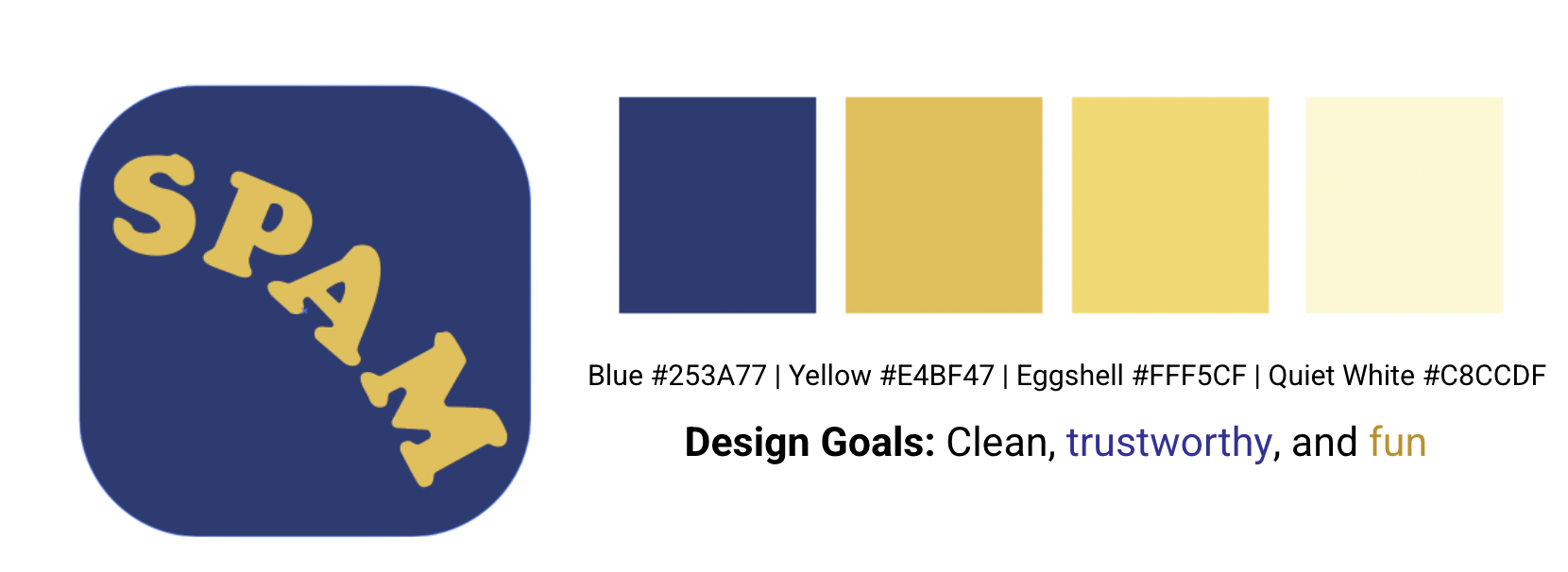
Wireframes
Landing & Login
Clear entry to discovery (Events) and participation (Voting), with friction-light auth into the core flows.
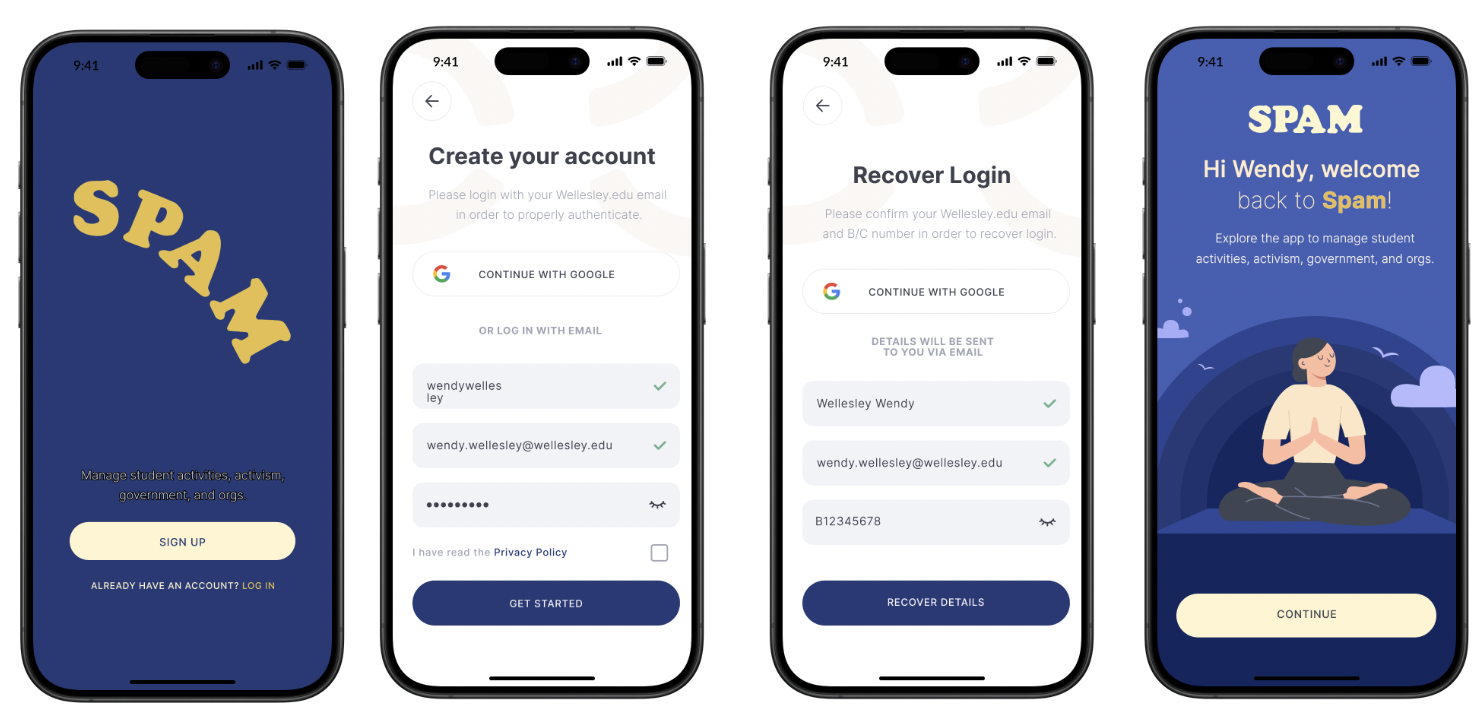
Iterations
P1 → P2
- Clarified problem & success metrics; tightened scope to Events + Voting as primary entry points.
- Introduced badge system; checked gamification balance.
- Reworked nav to reduce taps; added category filters and RSVP affordances.
- Drafted posting guardrails (rate limits / duplicate checks) to avoid “spammy” feeds.
P2 → P3
- Raised contrast & hierarchy on mobile; standardized cards and buttons.
- Added error/empty states and toast confirmations for key actions.
- Made voting explicitly confirmable (“Vote Send”), separated concurrent tallies, clarified timing.
- Refined profile to surface badges + recent RSVPs; introduced share flows.
Final Prototype
- Short onboarding hint (“Find events fast • Vote with confidence”).
- Calendar add + notification preferences (results posted, new events by category) as planned options.
- Future: evaluate SSO, privacy policy, and granular toggle settings pre-launch.
Key Flows
Voting
Discover open elections, read SOIs, and cast ballots. Emphasis on clear poll timing and vote accountability.
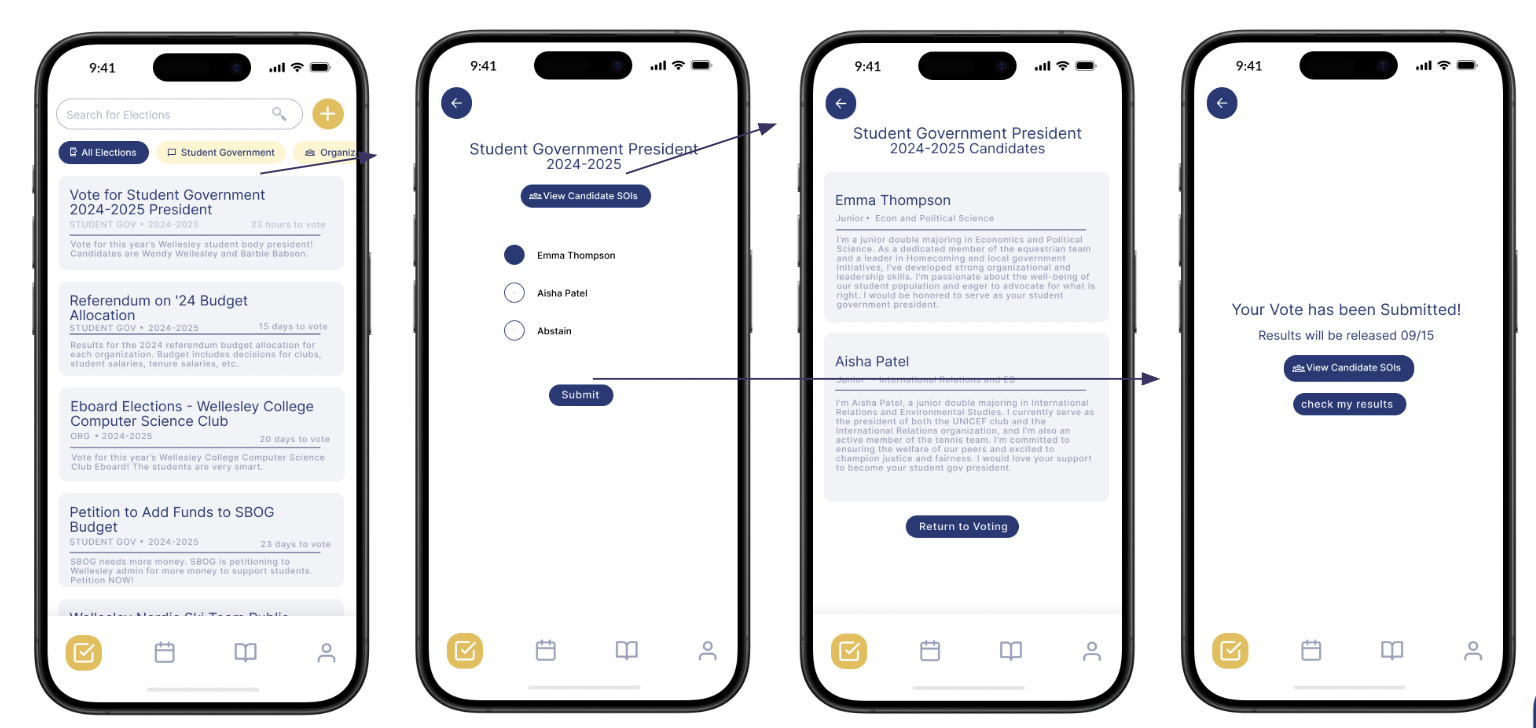
Events
Filter by interest (talks, protests, service, free food), RSVP, and share. Designed for quick scanning and “don’t-miss” reminders.
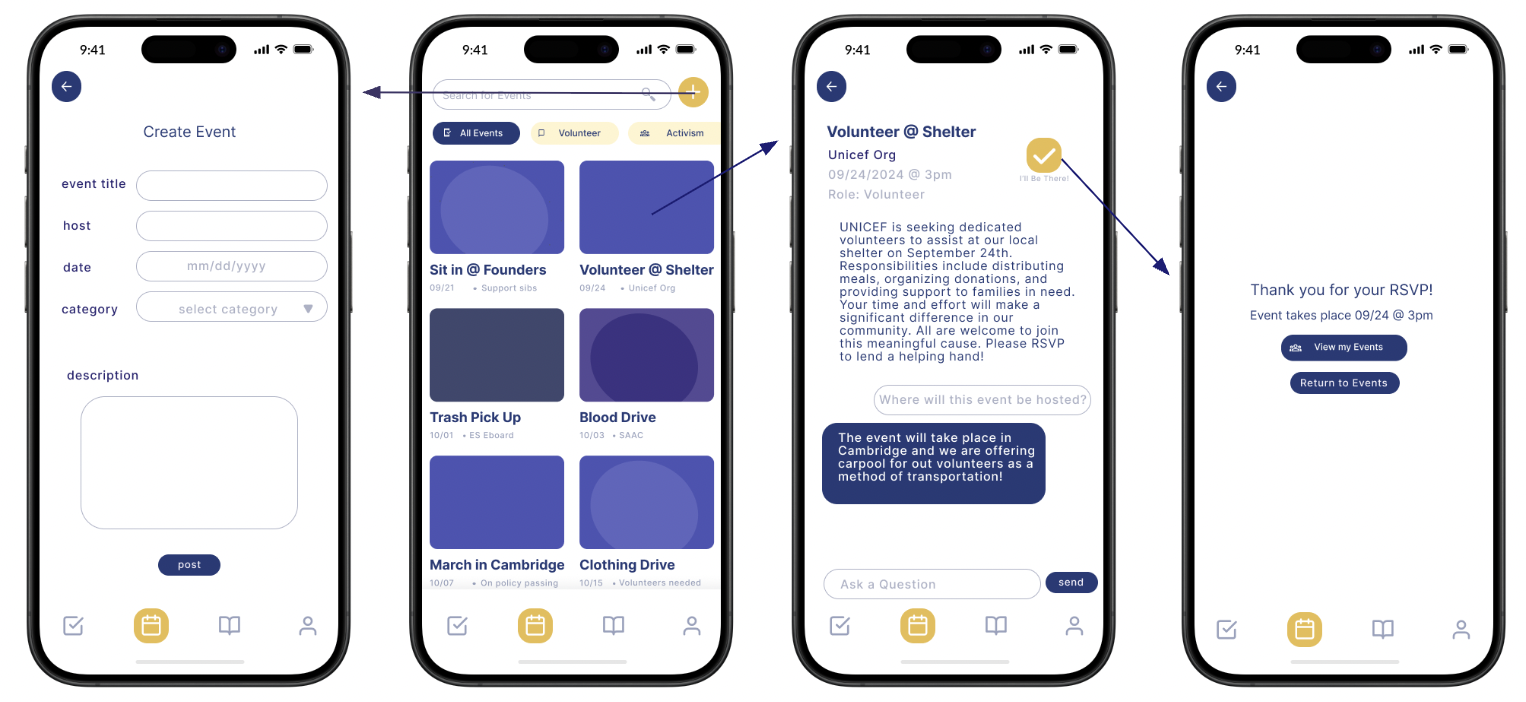
Resources
Hub for staying informed about civic topics on campus and beyond (e.g., voter registration, educational links).

Profile
Tracks participation and badges to reinforce real-world action (first vote, event attendance). Users can review RSVPs and shared items.
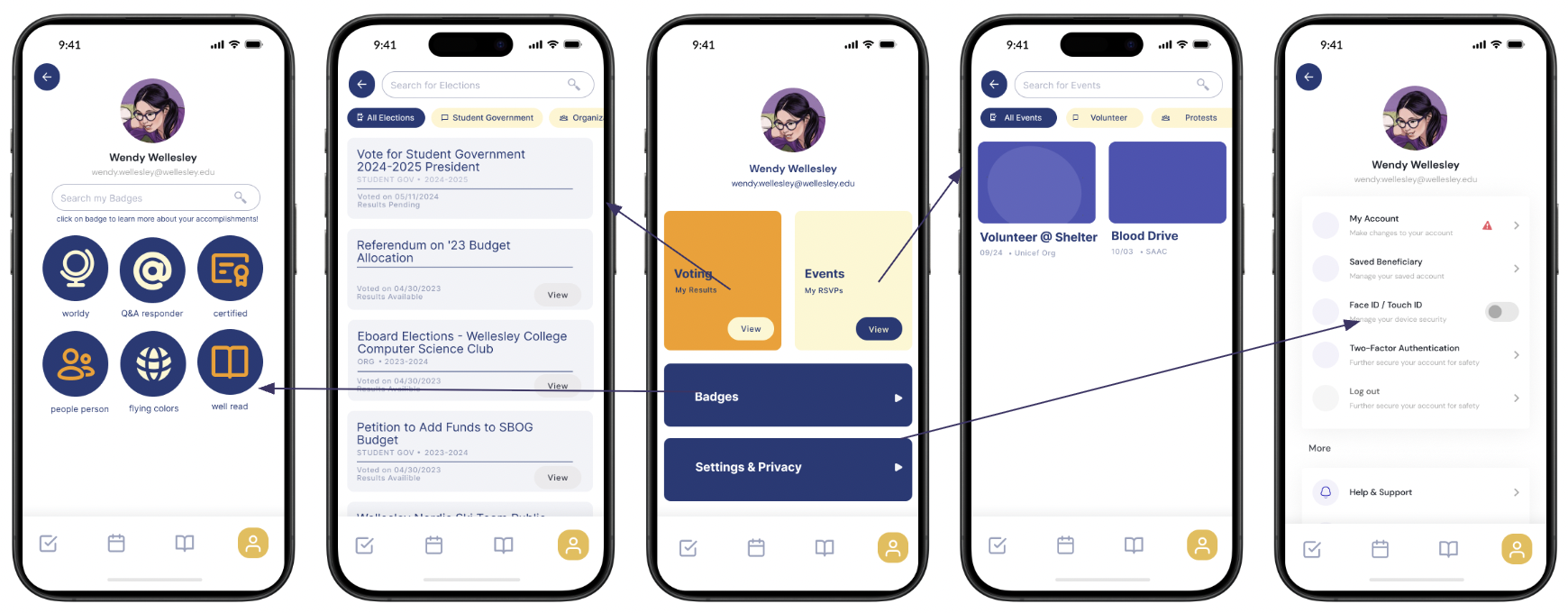
Risky Interactions
Badges
Incentivize engagement with badges; sash UI and option to pin a top badge on profile.
Voting Confirmation
Explicit “Vote Send” confirmation with clear feedback; handle multiple concurrent elections separately for accurate tallies.
Motivation
Encourage ongoing participation through visible progress, recognition, and social sharing.
Prototyping & Evaluation
Wireframes aimed for a traversable platform with consistent block-based layouts and isolated complex interactions. Open questions: preferred authentication (SSO?), notifications (e.g., results posted, new events by category), privacy policy and toggle settings, and what data users share.
What I Learned
- Clarity first: Quick filters + clean hierarchy beat dense feeds under student time pressure.
- Motivate action: Badges and progress cues nudge real-world participation.
- Accessibility through constraint: A high-contrast palette + whitespace makes dense info manageable on mobile.
- Plan governance early: Elections need strict timing and accountability plans before UI polish.
